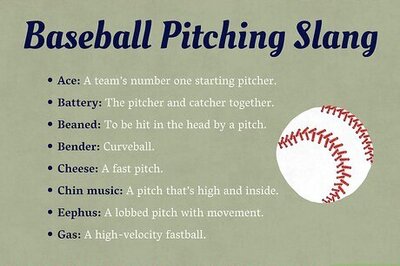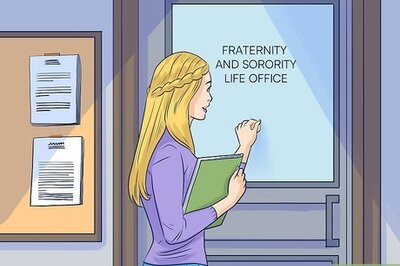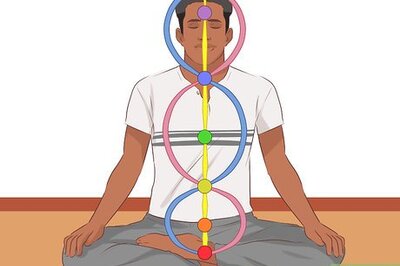
views
What does “butch queen” mean?
“Butch queen” refers to a gay man with masculine and feminine traits. Essentially, gay men who identify as butch queens aren’t overly masculine or feminine; rather, their mannerisms include a blend of both. Beyond that, a butch queen’s gender expression can vary; their physical appearance might conform to more traditionally masculine characteristics, but they could embrace feminine behaviors or activities. For example, a butch queen could have short hair and a masculine clothing style while having a higher-pitched voice or taking part in feminine-coded activities (like baking or knitting).
“Butch queen” is also a term for a masculine-looking drag queen. In ballroom culture, a butch queen is part of drag queen culture; specifically, “butch queen” drag looks are more masculine. Drag queens mainly dress up in feminine costumes; thus, butch queens further blur the lines between genders by combining masculine and feminine qualities in their looks and character designs. The most basic definition of a drag queen is a man who dresses in women’s clothing, though in reality, drag is much more expansive, and not all drag queens are cisgender men. Similarly, not all butch queens are cisgender gay men; the term can be used by anyone who identifies with it, no matter their gender.
How Butch Queens Challenge Gender Norms
Butch queens embody fluid gender expression, rejecting the gender binary. Traditional gender norms say that there are two genders (male and female), with everyone belonging to one of them—but that just isn’t the case. Gender is more than a binary, and butch queens are one such example of LGBTQ+ people existing outside that binary by blending masculine and feminine traits in their gender expression. Butch queens reject the idea that gender is one or the other; they embody the understanding that gender is a spectrum—and can be extremely fluid for some people. Butch queens also demonstrate that masculinity isn’t just for people who are heterosexual or cisgender. Masculinity is something that anyone can identify with and express!
Butch Queen vs. Femme Queen
A femme queen is a transgender woman who participates in ballroom culture. Femme queens are both trans and female-presenting, often expressing their femininity through their performances. “Femme queen” isn’t supposed to be a general term for a transgender woman; it’s specifically meant to describe trans women who perform and participate in the ballroom scene. Conversely, butch queens are gay men who incorporate masculinity into their gender expression. In the ballroom scene, the phrase “femme queen realness” speaks to a trans woman’s ability to blend in with cisgender (assigned female at birth) women.
Butch Queen vs. Trade
“Trade” refers to an attractive, masculine-presenting man. The term also refers to a gay man’s casual partner, or a man who can “pass” as being straight and masculine while really being queer and participating in same-sex sexual activity. This is the predominant meaning in ball culture; before that, “trade” used to refer to any uncommitted sexual partner in Black culture. The term can also refer to a straight man who partners with gay men for the economic benefits (gifts, money, and so on). Basically, trade is a much broader term with several possible implications, whereas “butch queen” refers to gay men who blend masculinity and femininity in their gender expression.
An Overview of Ballroom Culture
Ballroom (ball) culture is an underground LGBTQ+ subculture. Drag balls are competitions wherein drag queens perform based on various drag genres or categories. The participating drag queens (and drag kings) adopt drag personas with names and looks that reflect their style; prizes typically include trophies or cash. Over the years, ballroom culture has had a profound influence on everything from dance and music to language. Queens who participate in drag balls typically belong to a drag family, or “house.” These houses are based on the idea of chosen families. They represent community and support, particularly for those queens who can’t be themselves around blood relatives.
Ball culture originated in New York City around the 1920s. And it wasn’t always about competition. Early on, drag balls mainly involved white men throwing drag fashion shows; later, during the 1950s and ’60s, the queer Black ball community broke off to form its own underground subculture. By the ’70s and ’80s, ball culture had expanded, becoming a place for queer people of all ethnicities—though it was particularly a safe haven for Black and Latinx people of color. The element of competition arose as drag balls and ballroom culture expanded; nonetheless, at their core, drag balls remain an open and nonjudgmental space for the entire queer community!
Ball culture has become more mainstream through TV and drag clubs. In particular, the reality competition show RuPaul’s Drag Race is responsible for underground ballroom culture beginning to enter the mainstream. The show launched in 2009, though RuPaul himself made a splash over a decade earlier in 1993, with the release of his “Supermodel of the World” music video on MTV. Drag culture has also become more mainstream, thanks to shows at drag clubs and bars, where drag queens perform using the most popular music of the moment! Drag performances began to really take off in the late 1990s—and nowadays, nearly every major North American city is home to a ballroom scene.
RuPaul’s Butch Queen Album
Butch Queen is the title of drag queen RuPaul’s tenth studio album. One song from the album, “U Wear It Well,” was also featured in the promotional campaign ofRuPaul’s Drag Race (season 8). As a world-famous drag queen and singer, several of RuPaul’s albums include popular drag terms—like Glamazon (released in 2011) or Realness (released in 2015). In terms of drag performance, RuPaul is known for high-fashion, glamorous drag looks that often incorporate exaggerated silhouettes and bold colors. However, RuPaul does also use drag to blur the lines between masculine and feminine, using elements of fluidity and androgyny.
















Comments
0 comment